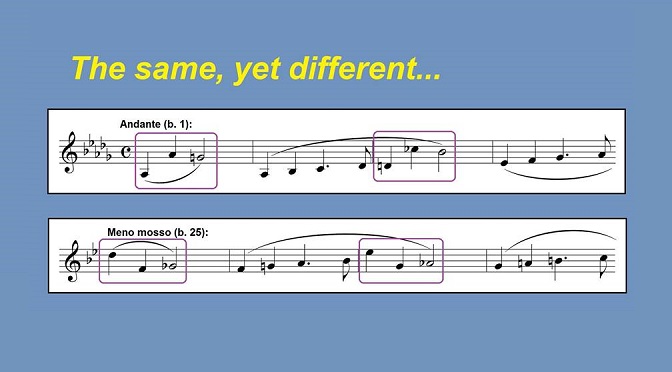Prelude No. 6: Unity within Diversity
The human mind thrives on perceiving unity in the midst of diversity, and that perception is at the core of our experience of the arts, including music.
In my Prelude No. 6 in D-flat major, the central Meno mosso section is cast in the remote secondary tonality of B-flat major. It uses essentially the same melody as the opening of the work, except that the head-motive of the melody is inverted. In the opening bars, the head-motive consists of an upward leap followed by a descent by a semitone. In the Meno mosso section, it is turned upside-down, becoming a downward leap followed by a semitone rise. With this subtle transformation, combined with the slowed tempo and the new key center, it becomes a new theme — yet subconsciously we are aware of its connection with the rest of the work. Plus ça change, plus c’est la même chose!

Not all possible transformations are so readily recognized by the human ear. For example, if a melody is played in retrograde, the listener is unlikely to recognize the connection unless the melody is very short and simple. The human mind just does not seem to be well adapted to recognize patterns that are presented backward in time, perhaps because such an adaptation did not serve any survival need for our ancestors. But melodic inversion is an easily perceptible transformation, and consequently I have used it not only in this prelude, but also in several other compositions (e. g., my Meditation for Piano Solo and the second movement of my Sonata for Oboe and Piano.)
You can watch the score video for the prelude here:

